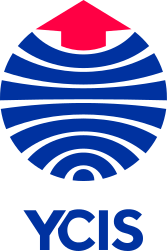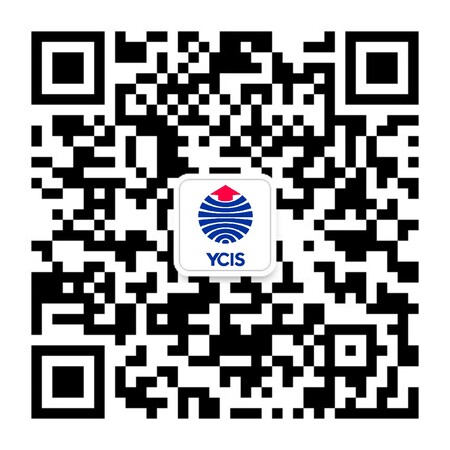Go Back
News
News
The Right Age to Start Your Child’s Bilingual Education
News
17 Mar, 2017
10 : 00
Bilingual education experts from the Yew Chung International School of Beijing were invited to attend the recent Distinguished Speakers Series, an event featuring a panel of educationalists from around Beijing discussing themes central to education. This year’s theme was bilingualism and, more specifically, the right time to begin a child’s bilingual education.
Thanks to our unique and effective bilingual co-teaching model and reimagined Learning Communities that enhance bilingual acquisition, YCIS Beijing’s contributing panelist, Year 3 co-teacher Jane Kang, was able to offer valuable insight into this important topic. Ms. Kang shared with us her informed opinion on the right time to start a child’s bilingual education as well as a few tips on how parents can more effectively raise their children bilingually outside of school.
When is the right time to begin bilingual education?
While researchers debate an ideal period to learn a second language, they generally agree that earlier is better. A regular concern of parents is that if a child’s too young, a second language might confuse them. Researchers and pediatricians may have agreed with that a long time ago, but there’s now a bulk of research that shows it doesn’t confuse them, but in fact offers a variety of benefits. Learning a second language at a young age increases gray matter density in the brain, which is linked to higher intelligence. It also increases a part of the brain that improves one’s ability to focus.
Does bilingual education affect a children’s ability, positively or negatively, to master their native language?
If you’re engaged in true bilingualism where content is delivered in both languages and children are learning both languages the entire time, and their native languages is one of those languages, then there will be no issues so long as the native language is being learnt at the same rate as or faster than the second language. The native language serves as the linguistic foundation upon which educators can build the second language. If there isn’t a strong foundation in the native language, children may grow up sublingual, meaning that neither of their language skills are developed. Therefore, this foundation is crucial to language development.
What makes the YCIS bilingual learning experience unique from other schools?
Many other international schools offer Chinese as a foreign language, where Chinese is compartmentalized to a Chinese language class during the day. Here at YCIS Beijing, every classroom has two teachers, one English- and one Chinese-speaking, which lead them through all of their academic content lessons. Thanks to this consistent exposure to the two languages, students are very easily able to switch between the two with their two teachers. Additionally, because exposure to both languages occurs in all academic areas, the result is much more meaningful language learning for the students.
Even if an international school claims to offer a bilingual education model, they oftentimes do not possess fully qualified Chinese educationalists but rather teaching assistants or translators. All of YCIS Beijing’s Chinese teachers are qualified and experienced educators with years of teaching experience in an international school setting.
Please discuss some of the unique features of our Co-Teaching model.
As mentioned above, the fact that both our English-speaking and Chinese-speaking teachers are professionally trained educationalists is essential to the effectiveness of our model. Additionally, all our content is delivered in both languages using a variety of different models; it’s not simply a translation of the English content into Chinese, but an actual back and forth teaching. This way, students aren’t just waiting to hear the language they prefer.
Please explain how we offer the best Blend of Eastern and Western Cultures.
Because everything we do is collaborative, lessons and lesson planning aren’t just English teachers taking the lead, but both sides coming together to add their cultural background and cultural take on things.
How do YCIS Beijing’s Learning Communities encourage bilingual acquisition in students?
One positive aspect is the fact that we have an EAL specialist, which allows our EAL students to interact with their peers much more regularly than a normal classroom environment. This gives them a greater opportunity to interact with their peers in their second language. The groupings are far more flexible as well, giving students the opportunity to interact with a greater number of students and form bonds with kids they wouldn’t normally have the chance to meet in a traditional classroom setting.
What future plans does YCIS Beijing have to further augment these unique approaches?
Year 3 has piloted our learning community program, and we’ve seen great transformations in our students. We’ll be transforming our Years 4 and 5 sections into Learning Communities this summer, and the whole school will incrementally be transformed in the coming years as well. We are very pleased that the whole school is coming together to embrace this learning community model!
What can parents do to support their children’s bilingual acquisition at home, even if they don’t speak one or both of the target languages?
The most important thing that parents can do is develop the native language at home, especially if the child’s native language is not used in school. Read lots of books to them in their native language to make sure they develop at a proper rate.
To help your children develop their second language, I would encourage parents to find a natural way to develop it rather than just getting a tutor. Reach out to the other parents with children in your child’s class whose children speak the target language and see if you can set up some playdates. See if you can have your child join clubs or activities that are in the second languages. The key is to give your child pressure-free experiences and opportunities to learn the second language naturally.













